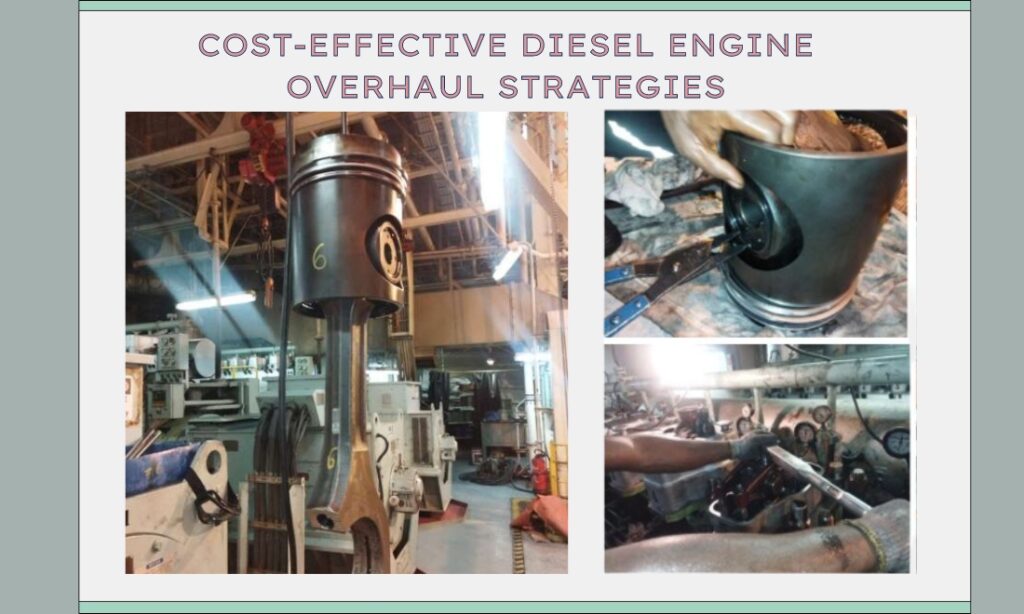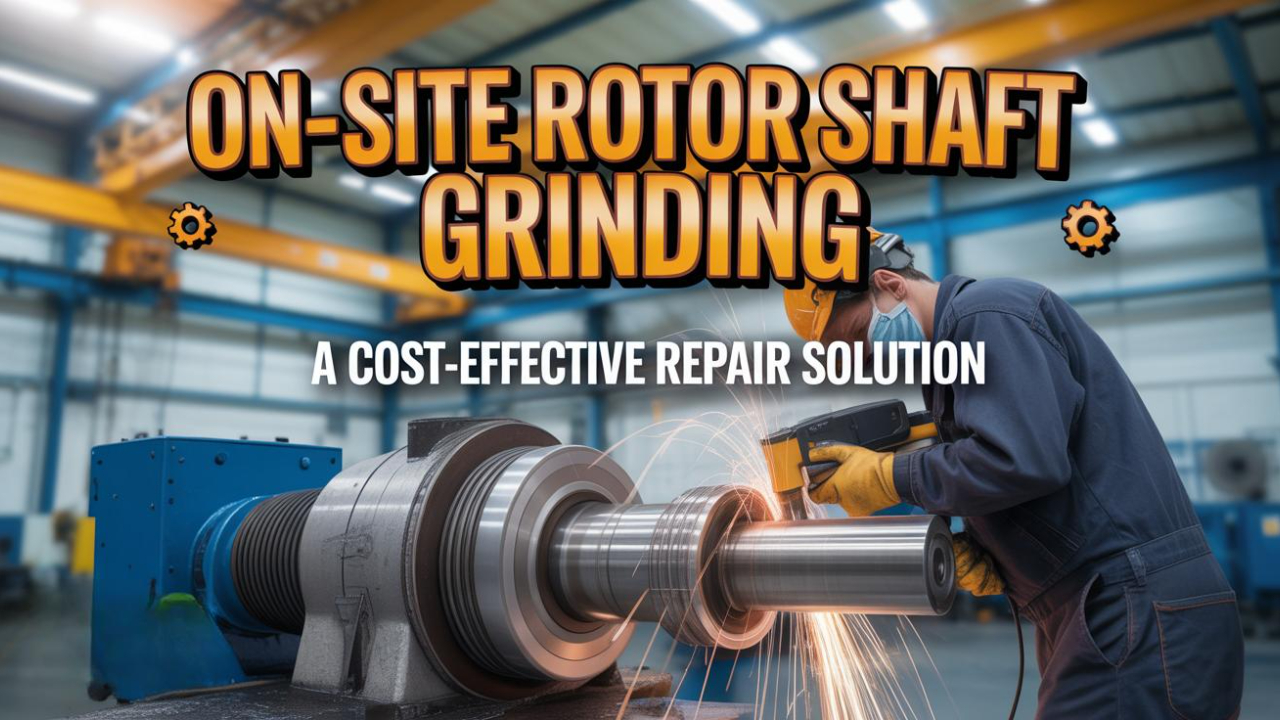Diesel engines are the powerhouse behind much of our construction, transport, and farming machinery. Known for their robustness and efficiency, these engines withstand some of the harshest conditions. However, even the best diesel engines require periodic maintenance and overhauls to maintain their performance and longevity. Overhauling of diesel engine components is essential to prevent breakdowns, wasted fuel, and loss of efficiency. This blog will delve into cost-effective strategies to overhaul diesel engines without compromising quality.
First and foremost, one needs to understand the repair procedure to cut down costs. Analyze which parts should be replaced and which can be repaired and used again. Purchasing low-cost, good-quality parts and arranging overhauls during periods the apparatus is not under operation could also be cost-effective. Another low-cost solution to bring back a diesel engine to its optimum performance would be to get it repaired from expert professionals who will waste less time repairing it. In this way, by following the above-mentioned tips, diesel engines can be maintained, and money can be saved by companies. Such Overhauling of Diesel Engine is most essential here.
Section 1: Understanding Diesel Engine Overhaul
What is Diesel Engine Overhaul?
Repairs to diesel engines involve disassembly to inspect all components. Normally, first of all, the engine is disassembled. The parts are carefully checked for their condition. The good components could be repaired or even replaced. After repairs and replacements, an engine is rebuilt to the factory specification to run like a new engine.
Signs Your Diesel Engine Needs an Overhaul:
If an engine breaks down, then it has to be serviced. A slow engine, high fuel use, or plenty of smoke suggests problems. Too much oil may mean that piston rings or cylinder walls are worn out. Idle roughness or start-up problems indicate compression or faults in the fuel supply. Unusual sounds from an engine indicate damage. High heat or low compression is a pointer to issues within the engine. Restoring engine speed enhances reliability.
Section 2: Planning the Overhaul
Initial assessment and diagnosis:
First of all, the diesel engine should be inspected by a competent technician to find out where the problem lies. The process of Overhauling of Diesel Engine starts with that. Such an overall check may allow the professional to detect worn-out components, possible leaks, or any other symptoms of wear and tear that are impacting the performance of the engine. By correctly identifying these problem areas, the professional will be able to assess how much servicing is required and repair all essential components. This proper identification hastens the overhaul and prevents extra or unwanted repairs, thus saving time and money.
Setting a Budget:
The next important step in a makeover is budgeting for a proper Diesel Engine Overhaul. You should understand how pathetic the engine is, know the price of replacement parts, and estimate labor costs to make a decent budget. There could be some unexpected repairs or even tool renting during this transition. Keeping these factors in mind will go a long way in shaping the budget between the aspiration of going completely overboard and being frugal to avoid surprises.
Choosing the Right Service Provider:
Repair quality depends on the choice of the service provider. Choosing a reliable diesel overhaul service will increase results. Compare workshops by prices and services offered. Look at their experience, customer reviews, warranty, and such. That kind of careful selection will ensure that the repair will be of high quality and the performance and life expectancy of the engine will increase.
Section 3: Cost-Effective Strategies for Diesel Engine Overhaul
Use of Quality Replacement Parts:
High-quality parts are needed for a diesel engine. The lower-priced ones may appear inviting, but the high-quality ones can be deemed to save you cash in the long run. They offer value beyond that called for in the OEM specifications, and this will offer stable performance amid extreme diesel engine running conditions. The low-quality ones deteriorate quickly, needing expensive repairs and downtime that could have damaged the company. Apply high-strength parts to achieve the purpose of prolonging the life of the engine and minimizing the cost of maintenance.
In-Situ Overhaul Techniques:
In-situ overhauls can help reduce repair expenses. Some parts of the engine can be repaired or rebuilt without disassembly of the parts. This method reduces the cost of engine disassembly and reassembly with damage. Small in-situ changes can correct cylinder heads and valve seats without removing the engine.
Leveraging Technology:
This innovative method to repair and overhaul of engines may reduce repair costs. Improved engine monitoring better places engineers in a position to identify and fix faults. This will protect against any sort of wasteful repairs and ensure that only required components are changed. These tools may detect minor flaws before they develop. Preventive maintenance may reduce expensive repairs. Technology may make engine maintenance cheaper and more efficient, restoring the operation of the engine without waste.
Section 4: Step-by-Step Overhaul Process
Disassembly and Inspection:
The simple repair of a diesel engine involves the dismantling of the engine for the parts to be inspected. The engine is carefully disassembled to inspect each part. Every part of the engine is checked for any damage, wear out, or cracks that may affect its performance. Such detailed scrutiny at this stage will tell which parts of the engine need to be replaced in order to regain its performance. Replace old and low-quality pistons, bearings, and gaskets with quality ones to have a smooth running of the engine in adverse conditions.
Cleaning and Reconditioning:
The reusable portions of the engine are thoroughly cleaned and refurbished. This gets rid of the carbon deposits, rust, and other impurities by polishing, grinding, and sharpening. These parts will function much better and for a longer time when expertly cleaned and refurbished. This step is critical because cylinder heads and valves are things that need precise work for seal and engine performance.
Reassembly and Testing
The repair and overhaul of engines involves the careful assembly of new and used parts. This is quite an accurate process because the parts have to fit properly since small misplacements may affect the overall functioning of the system. Proper testing of performance is done, and then the engine is built. They simulate life situations so that the power, efficiency, and durability of the engines are assured. Check for any flaws and rectify them before the engine is used again for success and peak performance.
Section 5: Post-Overhaul Maintenance
Break-in Period Guidelines:
A new or rebuilt engine requires some runtime to perform well. It is the period during which a number of suggestions or guidelines provided by the manufacturer are followed in respect of oil change, driving, and weight loads on the vehicle. This involves properly “wearing in” pistons, rings, and bearings to prevent premature wear and damage. Break-in has a bearing on both performance and durability. If it is not done, extra oil consumption may be the case, with power loss having a bearing on life.
Pre-planned maintenance:
Properly repaired and maintained engines tend to last longer. Smoothening of the running of an engine requires it to be repaired. These maintenance tasks include frequent oil and filter change, frequent examination, and new oil that lubricates and provides less friction. Clean filters protect the engine. Leaks and uneven wear will be detected and fixed under regular examinations. Following these steps in maintaining the engine, one can extend its life by avoiding huge repair costs.
Dealing with a professional and following these tips can help in reducing diesel engine overhaul expenses. Proper break-in processes and frequent maintenance ensure smooth working of the engine, as well as minimize overhauls and repair works. This will run the engine smoothly, which results in time savings along with its repair costs.
Conclusion
Provided one has a good plan and proper execution, diesel engine maintenance can be relatively cheap. Owners can make intelligent choices provided they can recognize the problems in their engines, view them properly, and hire a good repairman. Intelligently using quality replacement parts, in-situ care, and new technology helps save money without affecting the performance of the engines.
Maintenance after repair is essential. Following break-in time and servicing the engine periodically will maintain the life and performance of any engine. A good diesel engine repair will, if properly done, increase its life, decrease fuel consumption, and decrease pollutants; thus money is saved. Any business or entity can get full value for money from their investments in engines if maintenance and repairs are done properly.
Prevention is always better than cure. Checking of engines and rectification of minor flaws at the correct time may avoid major repairs.











No Comments